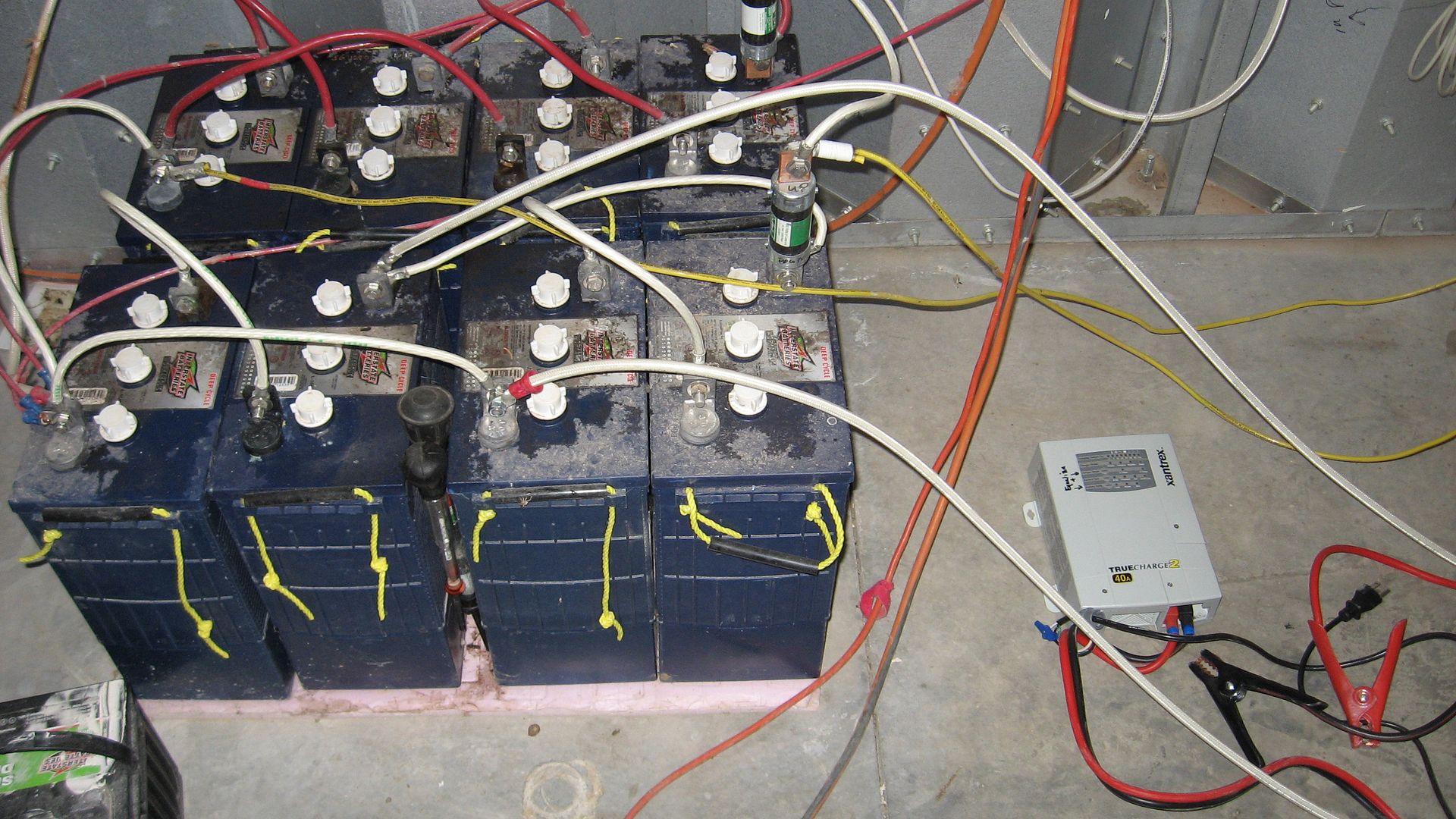What Biere says, use your genny to charge your batteries.
Here's an excellent way...
Just took this pix a few days ago, pls excuse the mess on the batteries, SO needs to get busy and clean them...

On the right is a Xantrex 40 Amp Truecharge.
They are 3 stage chargers and are 'smart' for various battery chemistries.
All you do is add a powercord to the 110 vac input and heavy cables and clips on the output.
The jumper cable you see is from Harbor Freight, good deal, a decent jumper cable set, all copper IIRC, ~$12 and you can cut in half to get two sets for two charger setups.
This charger came from ebay at a fairly good price.
Alternatvely you can buy the Vector VEC1093A 10/20/40amp smart charger for less than half or even less, on ebay... As low as $30 recently.
The reason I went to the Truecharge is because I can do an equalize cycle with it. This function isn't needed for what you want to do. But is desirable.

OH, the Truecharge isn't to charge this ^^^ bank. My SO was using it to top off a group 26 or whatever, deep discharge 12vdc battery.
The juice to do it WAS coming from the big battery bank.

All the support equipment for this bank is mounted above it. 3 Outback charge controllers for 3 solar panel banks, a Xantrex 1800 watt sine wave inverter and other stuff.
They run 2 chest freezers and other stuff all year long.
The 2 white wires going to the left are for the Kubota engine/alternator design project.
[Note the fusing technique to save some $$$ They are NON200 fuses from any hardware store or ebay if you want to buy them at a fair price]
They work real good...

 Win a FREE Membership!
Win a FREE Membership!